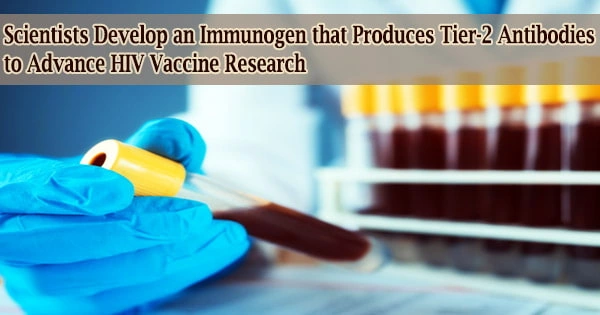HIV has killed 36.3 million people nearly four decades after its discovery, with no vaccine in sight. Researchers at The Wistar Institute, an international biomedical research leader in cancer, immunology, infectious disease, and vaccine development, have published a new study that takes a promising step toward producing an HIV vaccine.
For the first time in mice, the findings reported in Nature Communications show the promise of utilizing a unique native-like trimer to create Tier-2 neutralizing antibodies, which are critical for treating HIV.
Previously, evoking these types of antibodies with candidate vaccines necessitated lengthy and costly trials in big animal models, posing a severe bottleneck in HIV-1 vaccine development.
“With our new finding, we have opened the door to rapid, iterative vaccinology in a model that can produce Tier-2 neutralizing antibodies, enabling the development of more advanced HIV vaccine concepts,” said Daniel Kulp, Ph.D., associate professor in the Vaccine & Immunotherapy Center at The Wistar Institute and corresponding author on the paper.
For distribution to the mice, the researchers encoded the native-like trimer into DNA. This has the practical advantage of converting the host bodies into “antigen factories” rather than requiring a complicated vaccine manufacturing process.
The researchers next compared the outcomes of mice given the DNA-encoded native-like trimer to those of mice given a normal protein vaccination. Tier-2 neutralizing antibodies were only generated in mice who received the DNA-encoded native-like trimer.
With our new finding, we have opened the door to rapid, iterative vaccinology in a model that can produce Tier-2 neutralizing antibodies, enabling the development of more advanced HIV vaccine concepts.
Daniel Kulp
“We were able to generate strong immune responses with both platforms, but the DNA platform uniquely drove this neutralizing response,” said Kulp.
Kulp and his colleagues recovered monoclonal antibodies from mice and utilized cryo-electron microscopy to examine the atomic structure of one Tier-2 neutralizing monoclonal antibody after confirming their immunization regime was producing Tier-2 antibodies.
They discovered that the antibody attaches to a C3V5 epitope (a region of a protein that protrudes from the antigen and triggers an immune response).
Prior study has shown that antibodies binding to C3V5 protect animals from a SHIV infection, which is a close relative of HIV that infects non-human primates, in the gold standard HIV vaccine model (non-human primates).
“The structure gives us incredible insight into how this antibody is able to neutralize the virus,” said Kulp. “For the first time, we can strategize about how to design new vaccines that can generate broadly neutralizing antibody responses to the C3V5 epitope.”
The W.W. Smith Charitable Trust Professor in Cancer Research at The Wistar Institute, David B. Weiner, Ph.D., executive vice president and director of the Vaccine & Immunotherapy Center, and coauthor David B. Weiner, Ph.D., stressed the importance of their discoveries.
“What we’ve done is enable direct in vivo self-assembly of structurally designed immunogens, which are engineered and delivered using nucleic acid technology, inside the vaccinated animal. Our data demonstrating induction of autologous Tier 2 neutralization illustrate the value of this approach as a tool to create surgically tailored immunity against a difficult pathogen’s vulnerable sites, in this case for HIV.”





